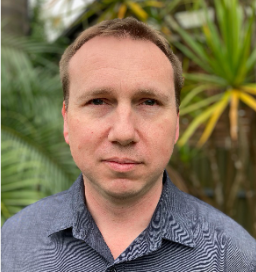Radar Clutter Modeling and Exploitation
Join us for an afternoon Seminar on Radar Clutter presented by AESS Distinguished Lecturer Luke Rosenberg.
This hybrid meeting will be in-person at the Lockheed Martin Syracuse Conference Center and online via WebEx.
While in-person participation is limited to US Citizens, anyone is welcome to join virtually!
Clutter and the need to detect targets in clutter is a significant part of radar design. The development of methods to model clutter and CFAR detection schemes for targets in clutter are still at the forefront of radar research, as evidenced by the numbers of papers on these topics in the radar journals and at the radar conferences. Models of clutter are only of value if they can be used in practice for the development of real radar systems. This seminar will help attendees to understand the impact of clutter on radar design and performance, and how to use clutter models to develop better designs. This insight is relevant not only to radar systems engineers but also to those responsible for specifying and procuring new radar systems for operational use.
The first part of the seminar will introduce the methods used to describe radar clutter and show how physical and empirical models are developed. The second part will describe how clutter models are used in different ways to predict and analyse the performance of radar systems in the various stages of the life cycle of a radar system. The tutorial will particularly emphasise the modelling of sea clutter and it use in the design and development of airborne maritime surveillance radars. The third part of the tutorial will describe how clutter models are used to develop realistic simulations of radar signals. Finally, the prediction of performance using the radar range equation and the various statistical models of clutter will be described for both non-coherent and coherent radar detection processing.
Date and Time
Location
Hosts
Registration
-
 Add Event to Calendar
Add Event to Calendar
Loading virtual attendance info...
- 497 Electronics Parkway
- Liverpool, New York
- United States
- Building: Lockheed Martin Conference Center
- Contact Event Hosts
-
Contact Sam Stone
stone@ieee.org - Co-sponsored by Lockheed Martin
Speakers
 Luke Rosenberg of Lockheed Martin
Luke Rosenberg of Lockheed Martin
Radar Clutter Modeling and Exploitation
Clutter and the need to detect targets in clutter is a significant part of radar design. The development of methods to model clutter and CFAR detection schemes for targets in clutter are still at the forefront of radar research, as evidenced by the numbers of papers on these topics in the radar journals and at the radar conferences. Models of clutter are only of value if they can be used in practice for the development of real radar systems. This seminar will help attendees to understand the impact of clutter on radar design and performance, and how to use clutter models to develop better designs. This insight is relevant not only to radar systems engineers but also to those responsible for specifying and procuring new radar systems for operational use.
The first part of the seminar will introduce the methods used to describe radar clutter and show how physical and empirical models are developed. The second part will describe how clutter models are used in different ways to predict and analyse the performance of radar systems in the various stages of the life cycle of a radar system. The tutorial will particularly emphasise the modelling of sea clutter and it use in the design and development of airborne maritime surveillance radars. The third part of the tutorial will describe how clutter models are used to develop realistic simulations of radar signals. Finally, the prediction of performance using the radar range equation and the various statistical models of clutter will be described for both non-coherent and coherent radar detection processing.
Biography:
Luke Rosenberg (FIEEE) received the bachelor’s degree in electrical and electronic
engineering, the master’s degree in signal and information processing, and the Ph.D degree
from the University of Adelaide, Australia, in 1999, 2001, and 2007, respectively. In 2016, he
completed the Graduate Program in Scientific Leadership at the University of Melbourne,
Australia. He leads the Radar Sensing and Exploitation group at STELaRLab, Lockheed
Martin Australia and is an adjunct Associate Professor with the University of Adelaide. Prior
to this he was a Research Specialist at the Defence Science and Technology Group, Australia.
His work covers the areas of radar image formation, classification, adaptive filtering,
detection theory, and radar and clutter modelling. In 2014, he spent 12 months with the U.S.
Naval Research Laboratory (NRL) working on algorithms for focusing moving scatterers in
synthetic aperture radar imagery.
Dr. Rosenberg has received a number of best paper awards, the prestigious Defence Science
and Technology Achievement Award for Science and Engineering Excellence in 2016 and
the IEEE AESS Fred Nathanson award in 2018 for ‘Fundamental Experimental and
Theoretical Work in Characterizing Radar Sea Clutter’. In 2023, he became an IEEE Fellow
for contributions to maritime radar. He is an officer of the AESS board of governors, member
of the radar systems panel, a distinguished lecturer for the AESS, senior editor for the
Transactions of Aerospace and Electronic Systems and past chair of the IEEE South
Australian Section. He has over 170 publications including a book on Radar Sea Clutter:
Modelling and Detection.
Email:
Address:United States

